Despite its rather isolated position in the Mediterranean (together with Corsica), Sardinia (Sardegna in Italian) has a long history of human presence. First settlement occurred somewhere between 450000-150000 years ago, by people from Tuscany, by a landstrip via Corsica. The first significant Sardinian civilisation was the Nuragic civilisation, which existed between 1700 BC and 500BC (although some part of the culture appears to have survived as long as 500AD, if I understand correctly). At least we can say it arose in the Bronze Age period.
Although this civilisation has left Sardegna with several types of remains (amongst which Tombe dei Giganti or Giant’s graves, dolmen etc…), the nuraghi stand out as most notable and numerous. These are megalithic towers, composed of large, seemingly unprocessed rocks which are piled on to each other without the use of mortar of any sort, with a truncated cone-shape. There are approximately 7000 nuraghi on Sardegna, varying from simple single-tower structures to multi-tower complexes, sometimes associated with houses that form a village around it. They had either a defensive or a religious function.
We’ve seen Viking burial mounds at Jelling (Denmark), prehistoric passage graves and dolmens on the Danish island of Møn, and Annick once visited the standing stones of Stonehenge in the UK. But almost nothing compares to these prehistoric towers, the nuraghi, of Sardinia.
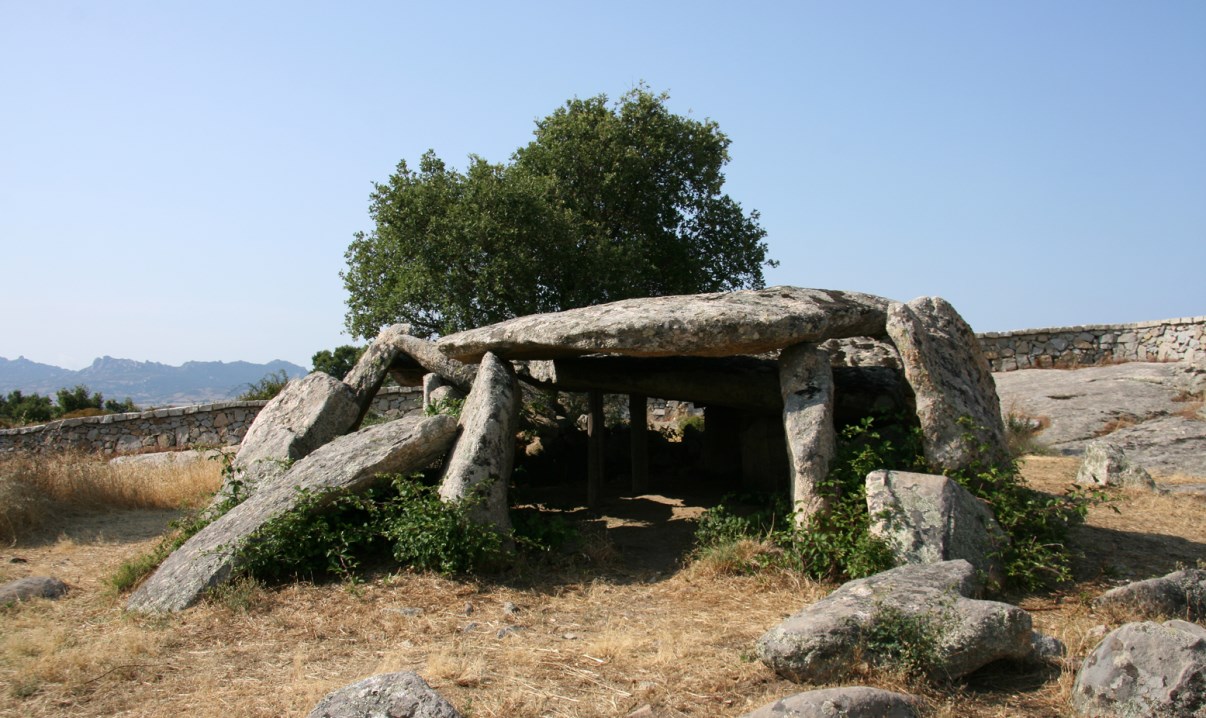
I do not aim here to be in any way complete in my overview, far from that. I just want to show some of the nuraghe we came across on our visit to the island in the summer of 2013. For us, they were striking landmarks and it was always fun to search for them in the landscape, especially in the Western part of the island, where there are many. Moreover, it was really interesting to observe the different shapes and different stages of conservation of these structures.
1. Nuraghe Losa (Abbasanta)
Next to the Barumini complex (see below), this must be the largest, most elaborate and best preserved nuraghe in Sardegna. It dates back to the 15th-13th century BC. It has a small visitor’s centre where very friendly people are ready with information and even a small line drawing of the original shape of this construction.
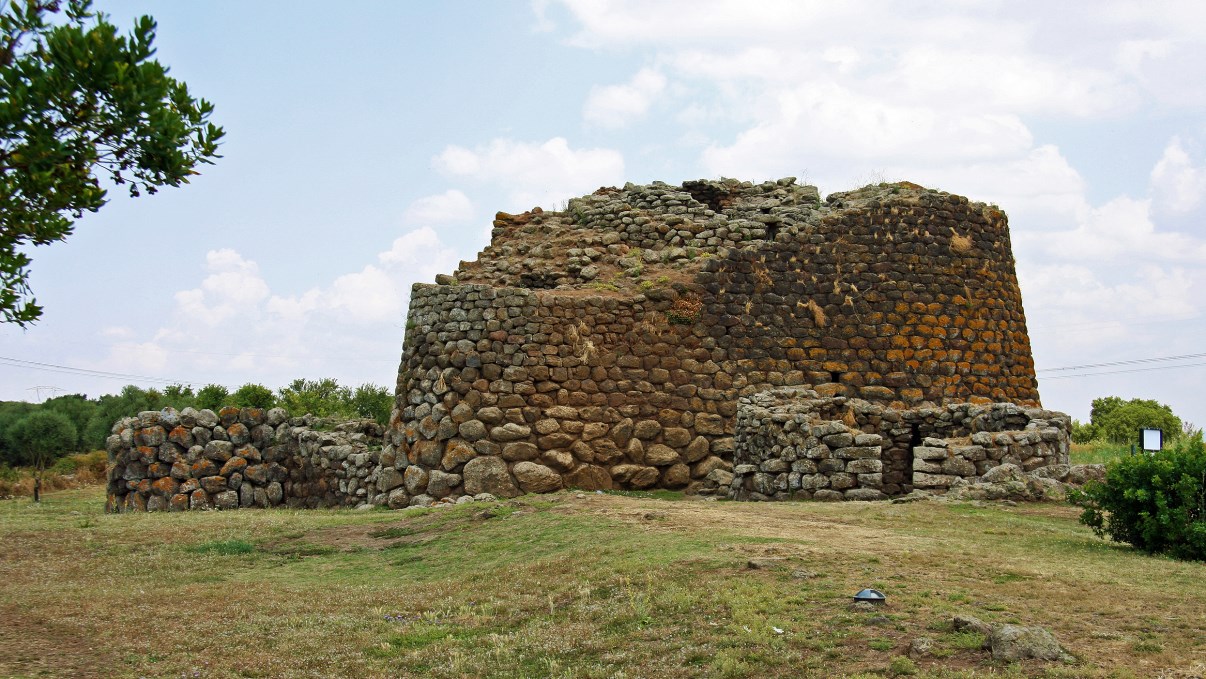
2. Nuraghe Santu Antine (Torralba)
This one is located about 30 minutes driving from the nuraghe Losa. We’ve seen it only from a distance. Warned by dark clouds, we decided not to get closer but turn back to our Sardinian home instead. In the end, this turned out to be the right decision: a few minutes later, we were driving our car in 20cm (10 inch or so) of rain water…
It is also one of the largest nuraghi in Sardinia. The central tower is rather high and slender.

3. Nuraghe Majori (Tempio Pausania)
Most nuraghe are located in an open spot (a field, meadow or alongside a road), and therefore easily perceived in the landscape. The Nuraghe Majori, however, is situated on the slope of a hill, surrounded by trees and shrubs. It consists of a single massive tower, constructed from huge granite blocks. There is a parking area for this nuraghe a bit north of Tempio Pausania, on the side of the SS133 road. From there, a 400 meter walk takes you to this nuraghe, a robust, rough construction in a green environment. When you see the structure from the path, surrounded by trees, it’s like discovering a Mayan temple somwhere in the Mexican jungle…

4. Nuraghe di Santa Sabina (Silanus, near Ottana)
Although small and rather simple in structure, consisting only of a single, conical tower, this was one of our favourites. The reason for this is its unique setting, next to a tiny Byzantine-style church and with the Sardinian hills in the background. Very picturesque indeed!
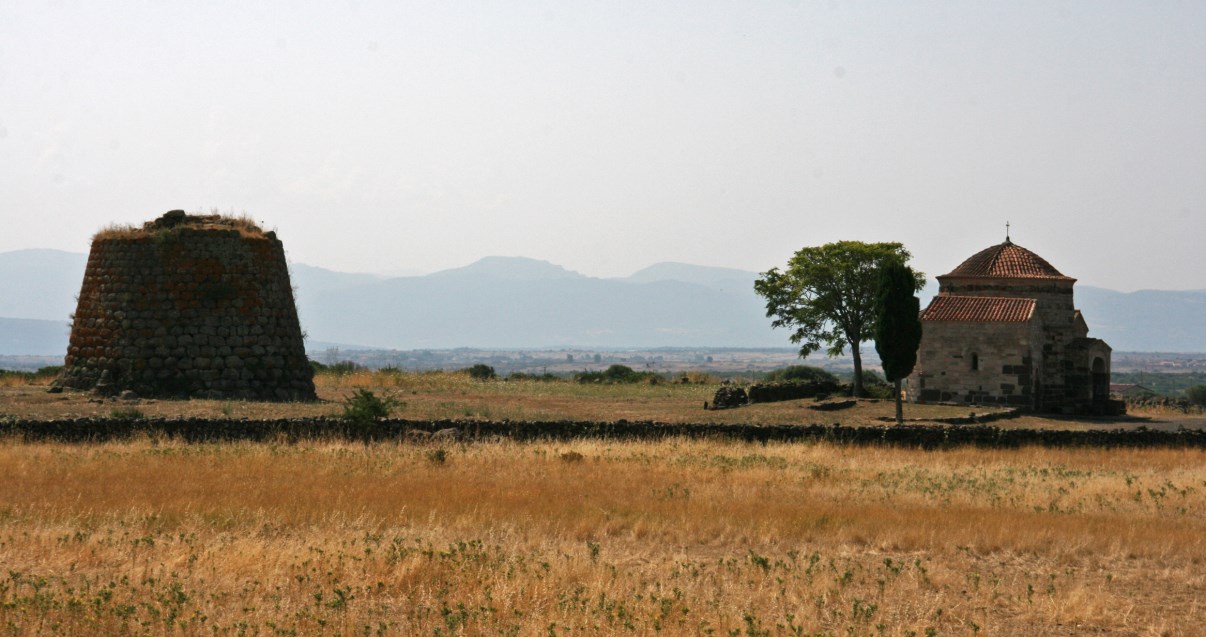
5. Unknown nuraghe (near Abbasanta)
I think this must have been the first nuraghe we came across. We were heading towards our first camping site when we suddenly crossed this half-collapsed tower on the side of the road.
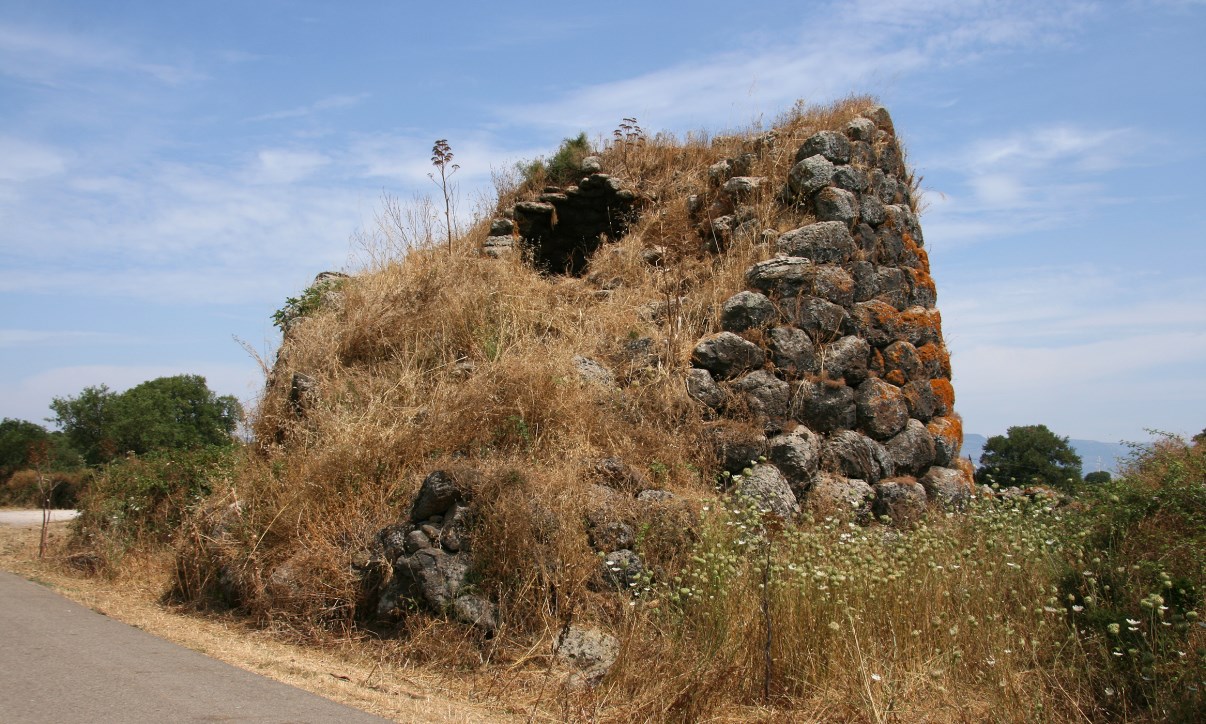
6. The Nuraghe Su Nuraxi di Barumini
The Nuraghe Su Nuraxi di Barumini is the most complex and most extensive example of a nuraghe, with numerous remains of housing still to be seen around the central stronghold. It has therefore been added to the UNESCO World Heritage list.
When we were in Denmark in April 2013, we were deeply impressed with King Harald’s burial site and the prehistoric structures at the Isle of Møn – and we felt the same deep respect when visiting the Barumini site. The fact that you can still walk around there, through structures that old – it’s something that silenced us.
There’s still a lot of things unknown about the Nuraghic people. Probably this site was built around a central, defensive watchtower. Later on, when times where calm and warfare was a thing of the past, people built a settlement around the tower. Most nuraghi consist of a single tower, but Su Nuraxi di Barumini is a complete village, with a defensive, multi-tower complex surrounded by the remains of housing. Weespecially enjoyed going inside the defensive tower. It struck us how remarkably well it was built: stone upon stone, each perfectly fitting in. Realising how old it is, it’s impressive that so much of it still remains. We had great fun exploring the site together with Febe, who loved going in and through the different hallways (although, inside the tower she was a bit afraid of prehistoric ghosts… 😉 ). The excellent guide we had that day, eloquent and well-prepared, was also a big bonus. Probably one of the best-managed worldheritage sites we visited until now! If you decide to go, bear in mind that taking a guided tour is obligatory, and you sometimes have to wait a bit for the next tour to start. It’s all worth it, though!
The fun part about tracking down world heritage sites is the diversity of structures you come across. We’ve already seen quite some architecture in Europe, but what we found at Barumini was nothing less than unique. Although I once visited the Shetland Islands and observed comparable prehistoric (Iron Age) truncated towers there, called brochs, the complex at Barumini is still unique, even among the nuraghi on Sardegna.

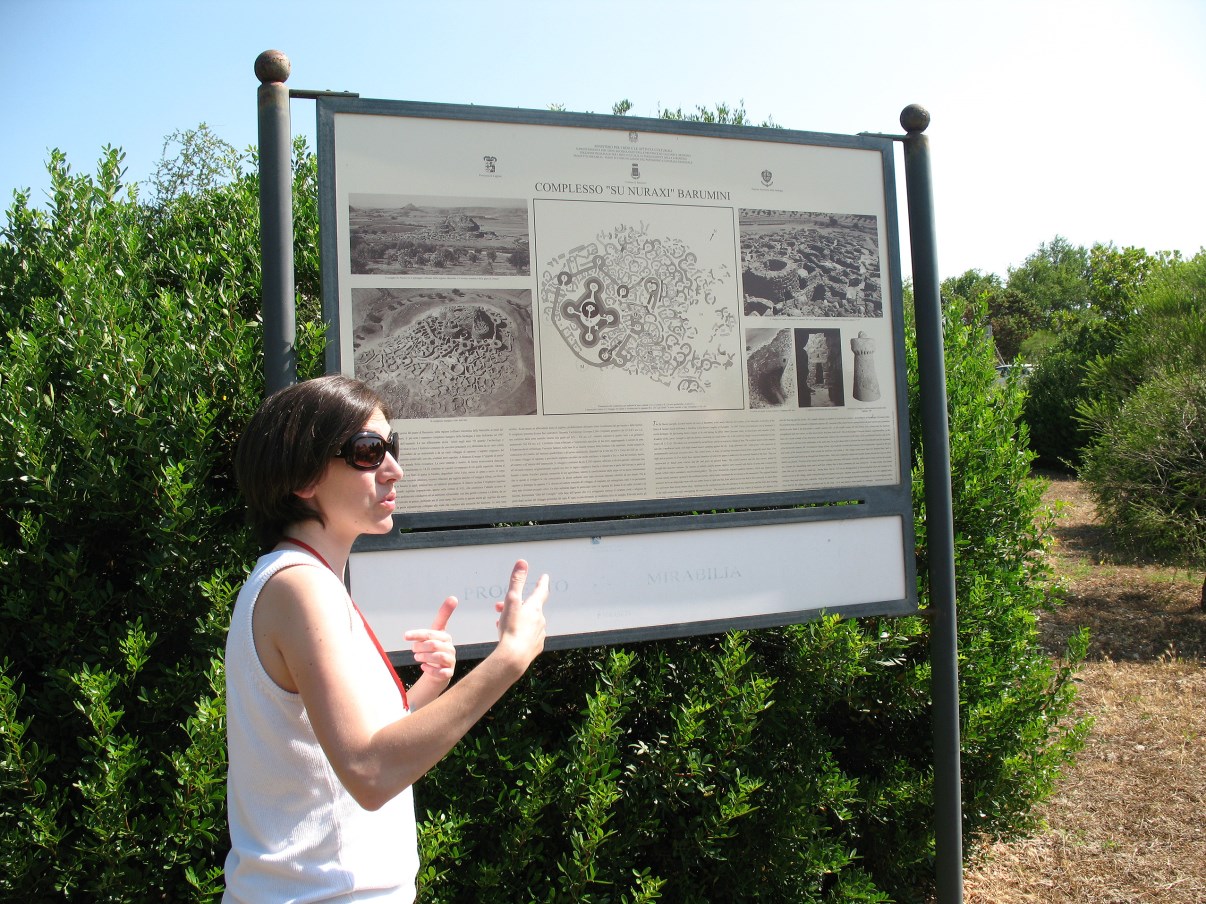
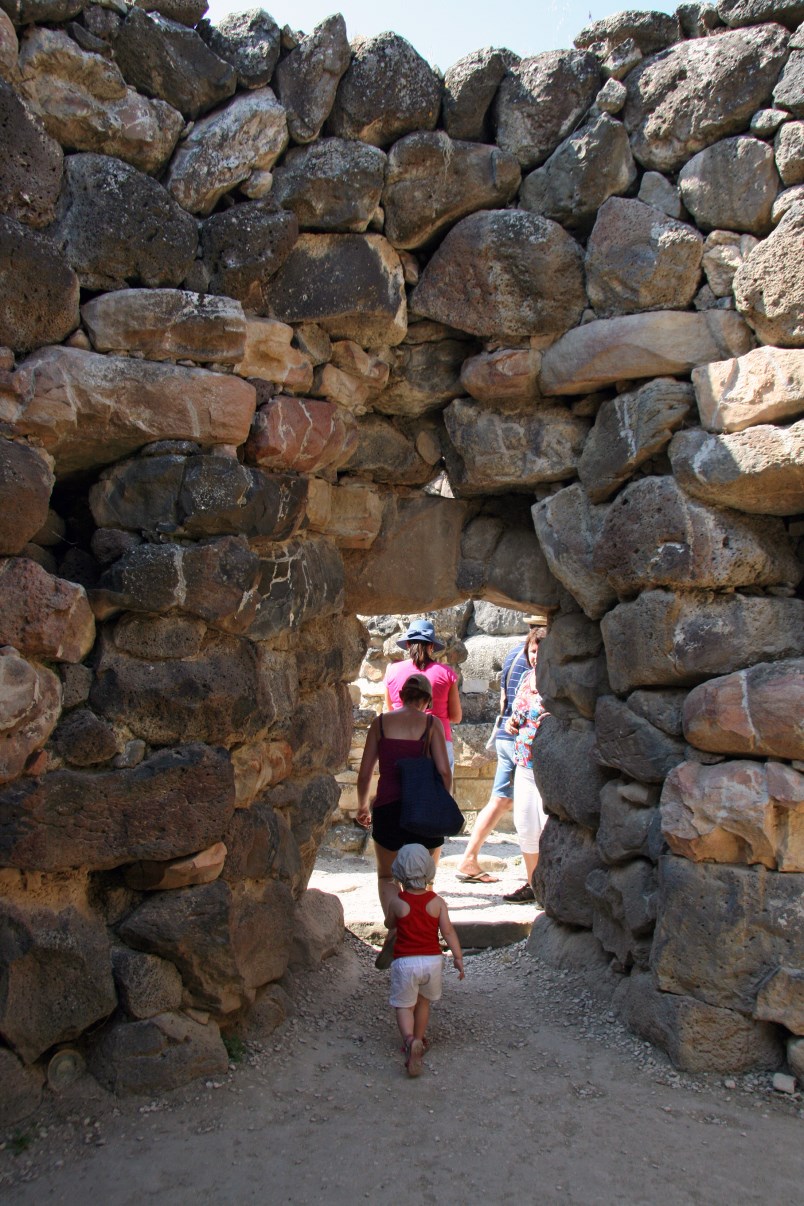
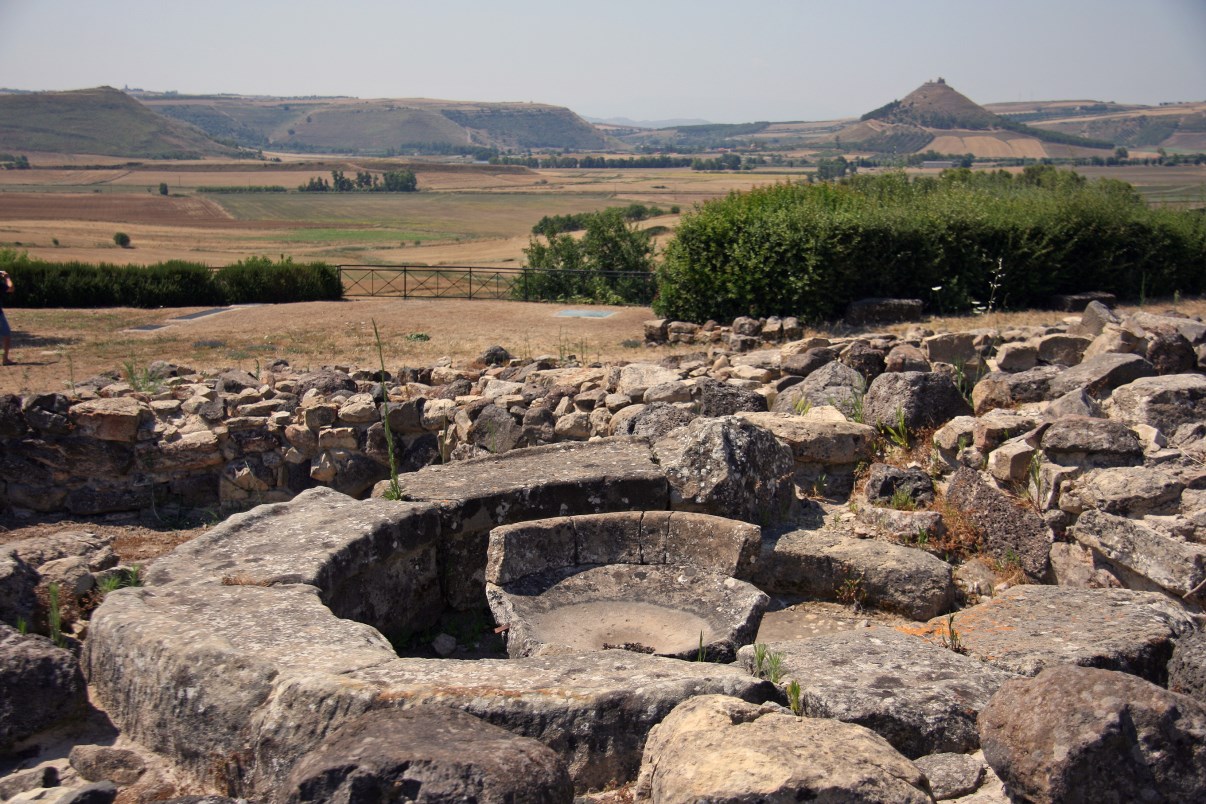

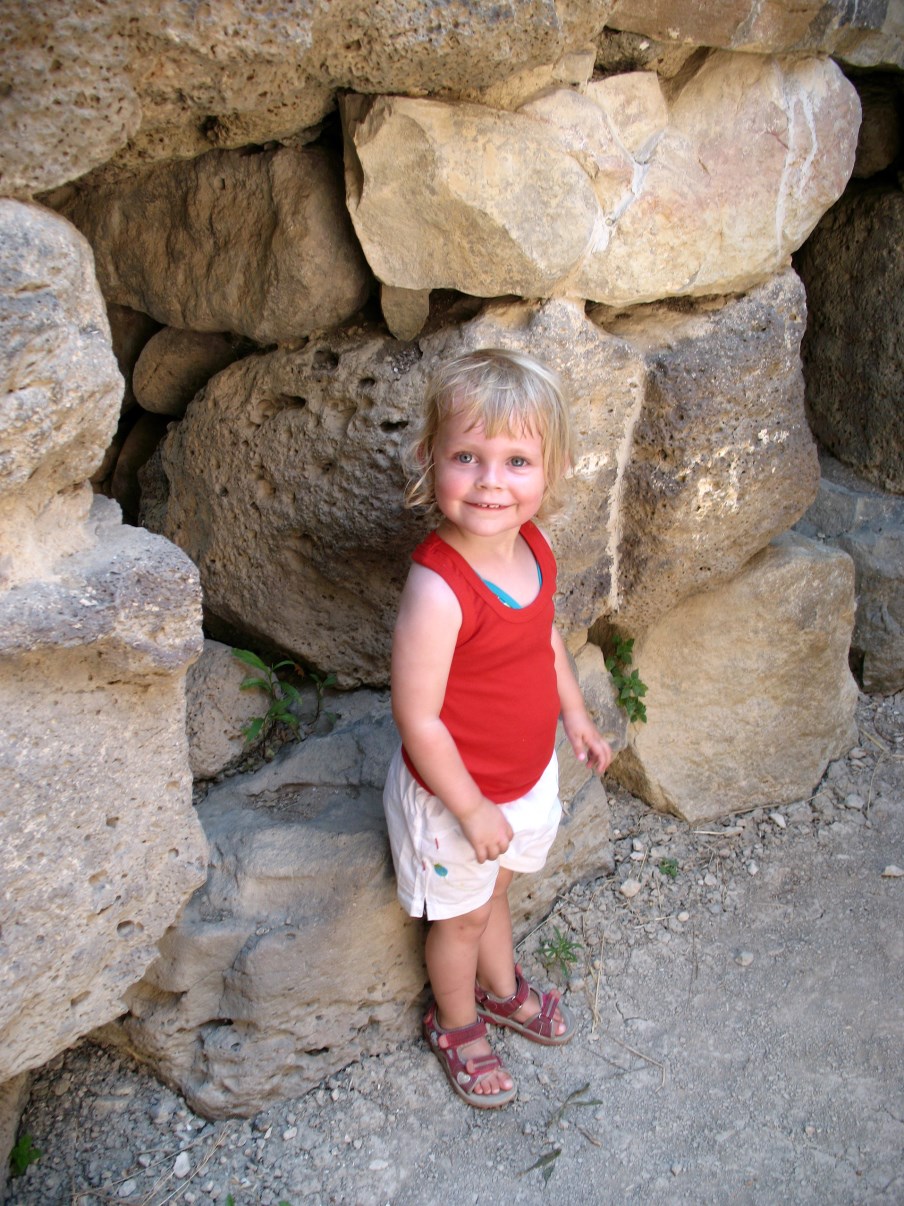
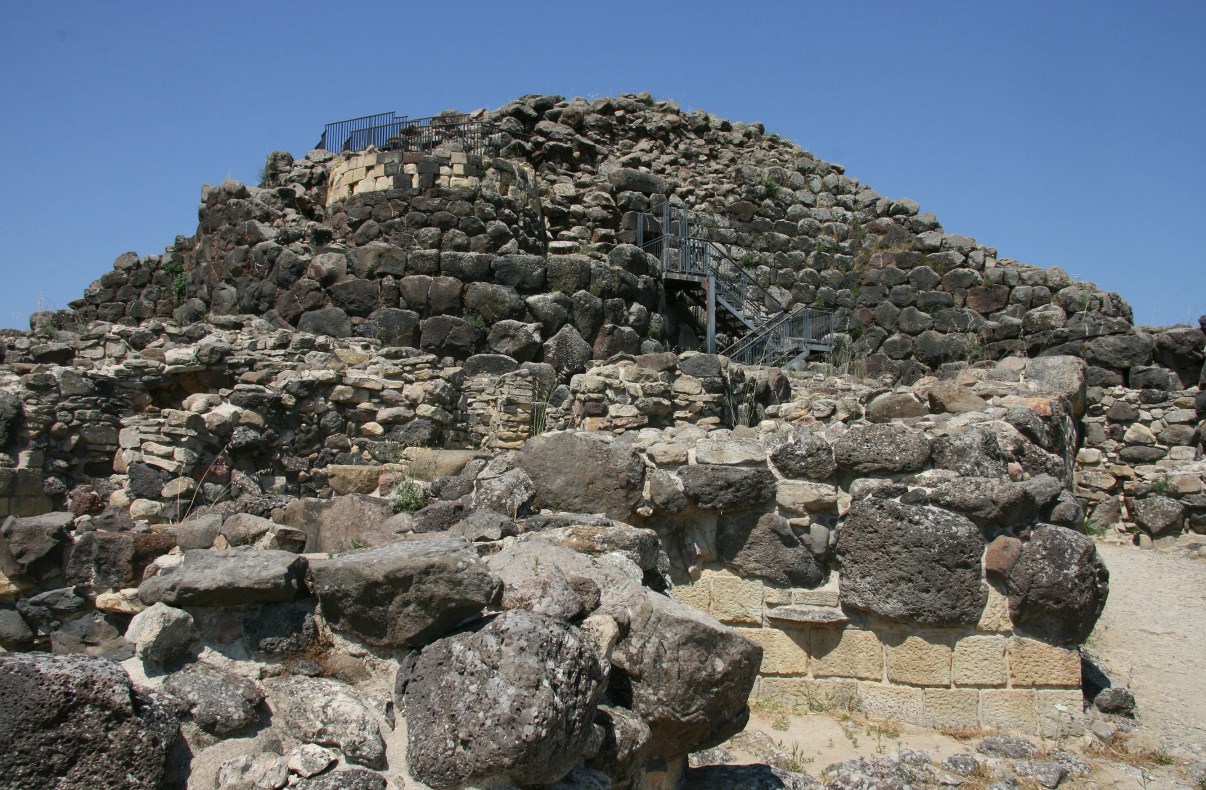
Background: the main tower, with the stairs we had to climb to get inside.
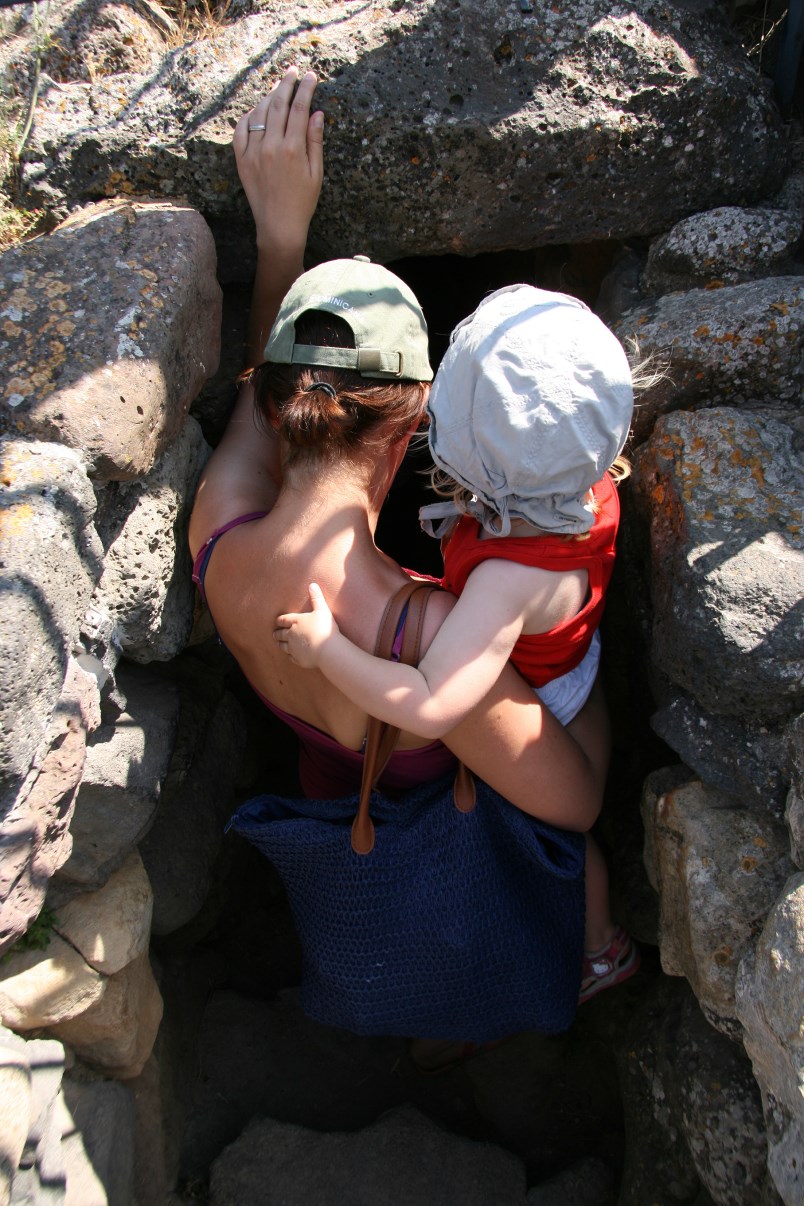
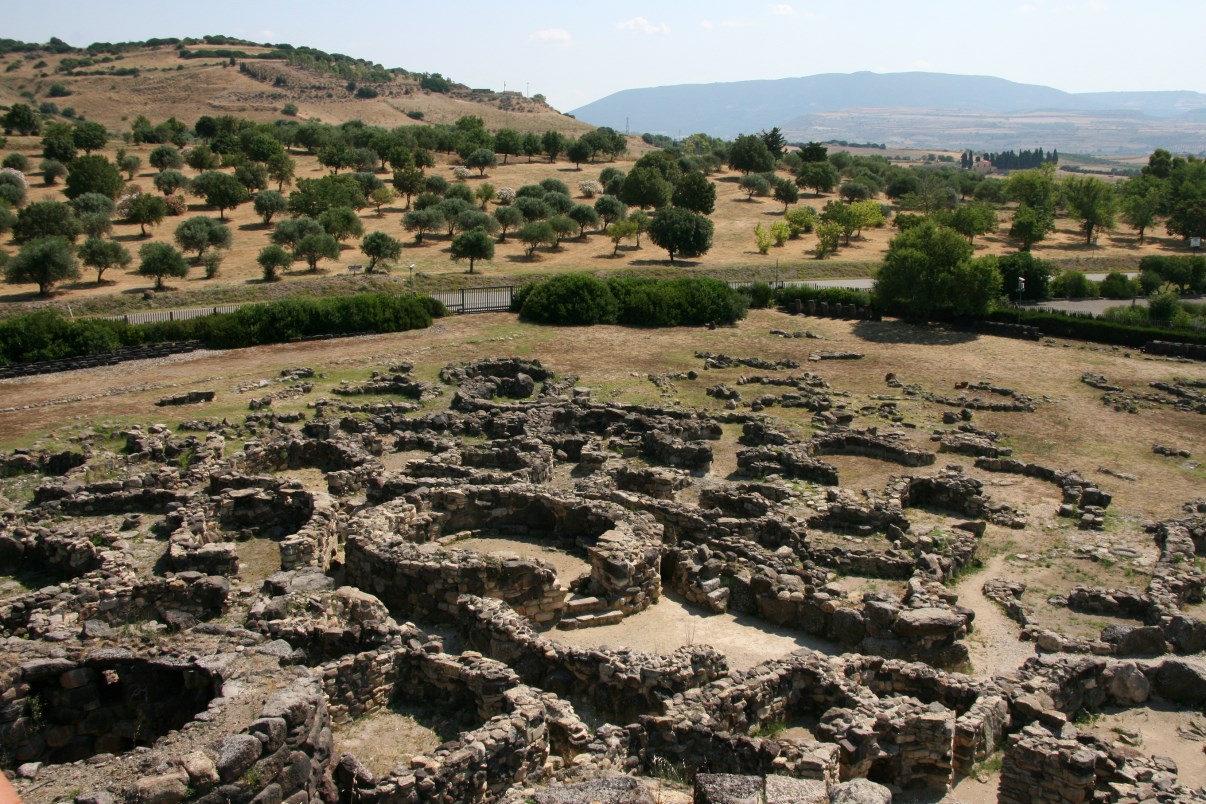
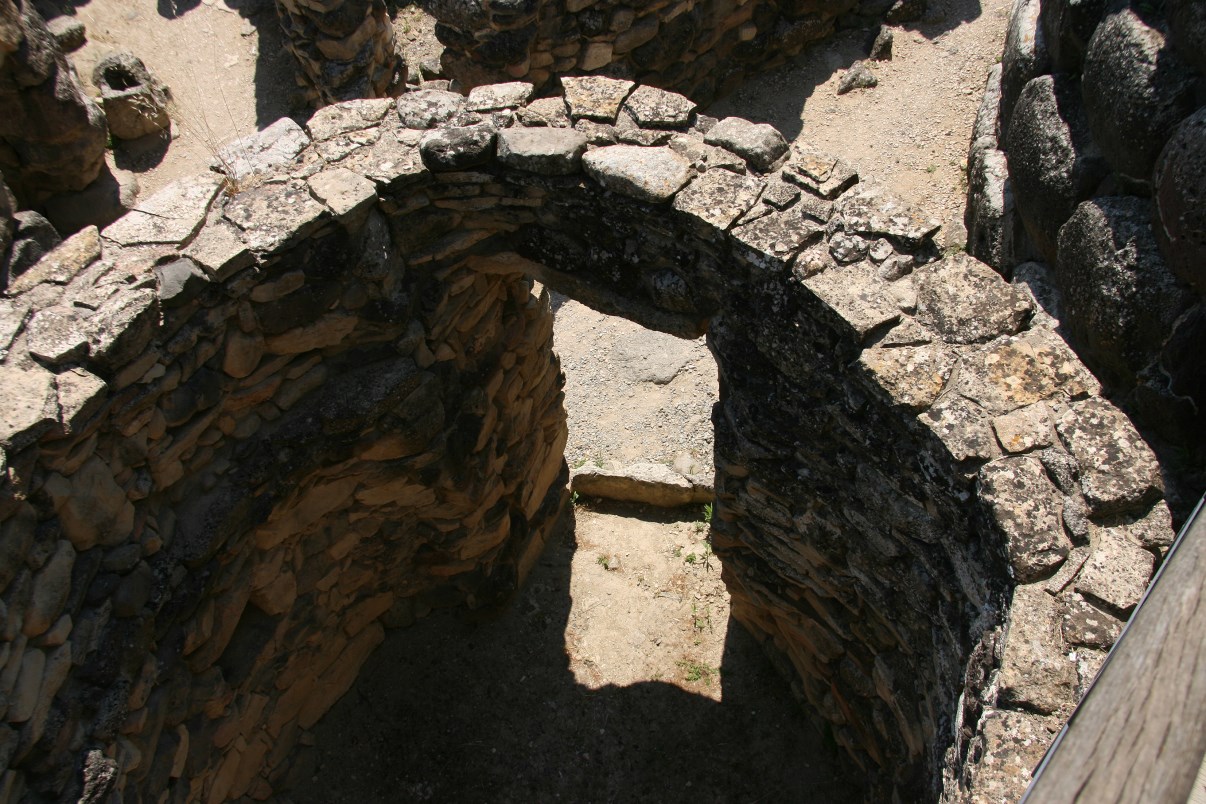
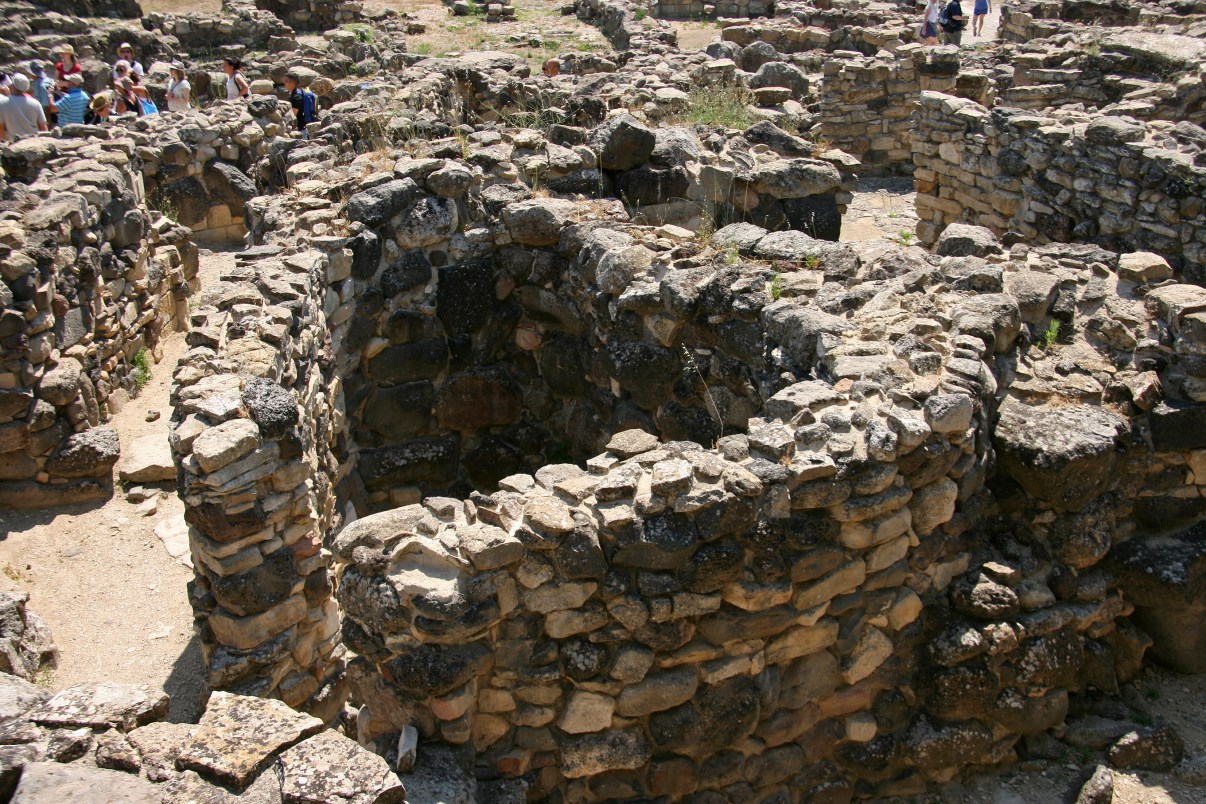

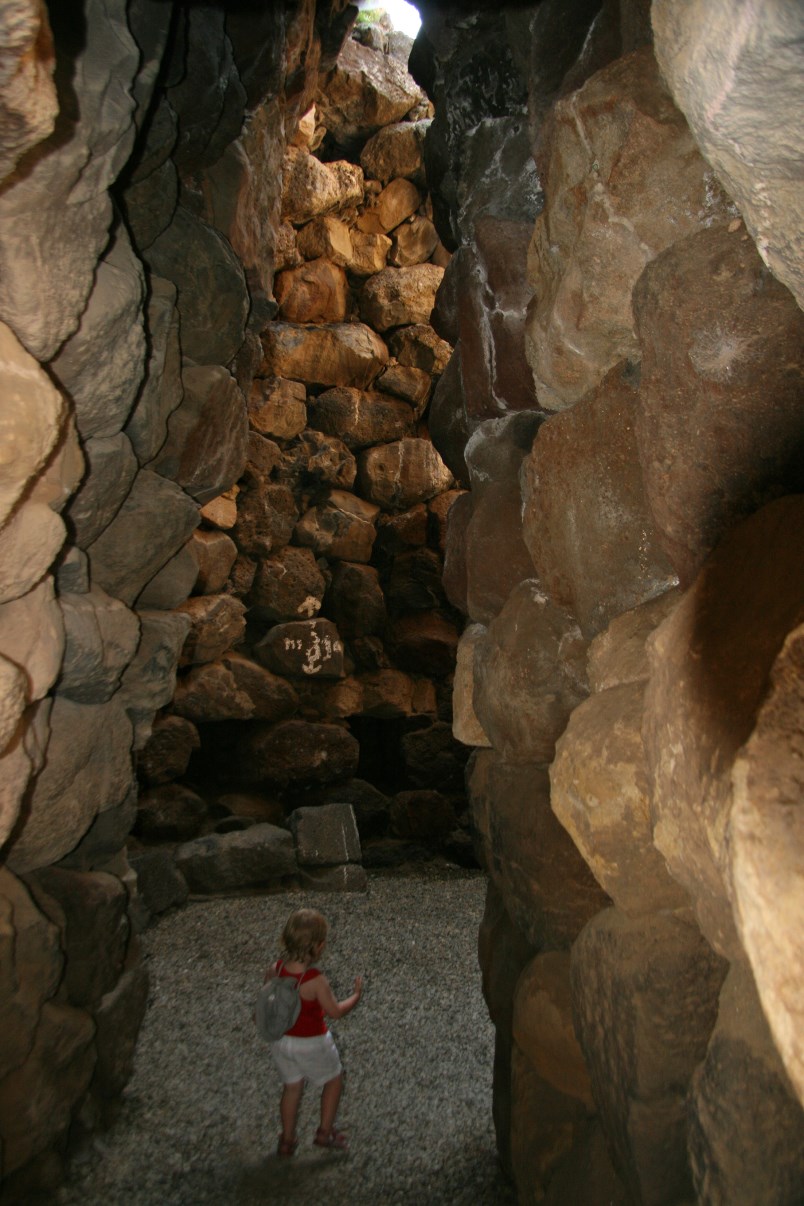
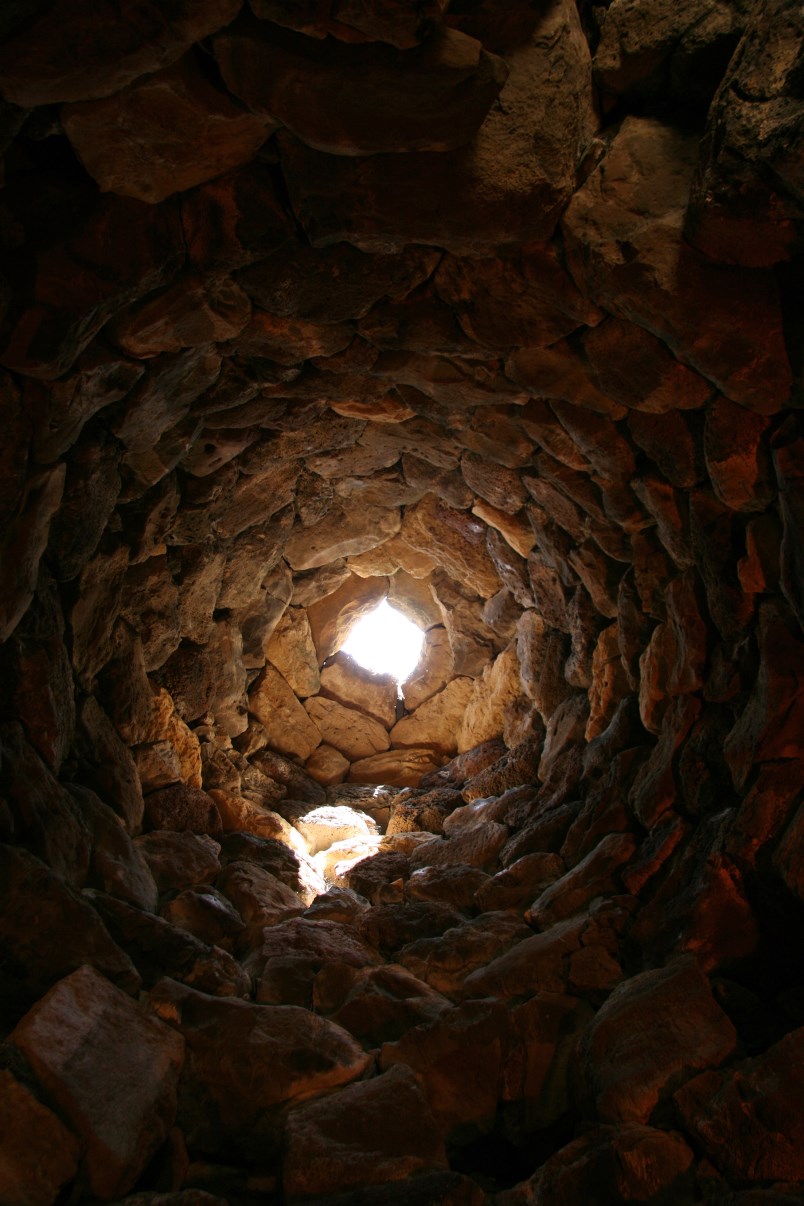

Su Nuraxi di Barumini (nr. 833)
The first significant Sardinian civilisation was the Nuragic civilisation, which existed between 1700 BC and 500BC (although some part of the culture appears to have survived as long as 500AD, if we understand correctly). At least we can say it arose in the Bronze Age period. Although this civilisation has left Sardegna with several types of remains, the nuraghi stand out as most notable and numerous. These are megalithic towers, composed of large, seemingly unprocessed rocks which are piled on to each other without the use of mortar of any sort, with a truncated cone-shape. There are approximately 7000 nuraghi on Sardegna, varying from simple single-tower structures to multi-tower complexes, sometimes associated with houses that form a village around it. They had either a defensive or a religious function. The Nuraghe Su Nuraxi di Barumini is the finest, most complex, most complete and most extensive example, with numerous remains of housing still to be seen around the central stronghold.




